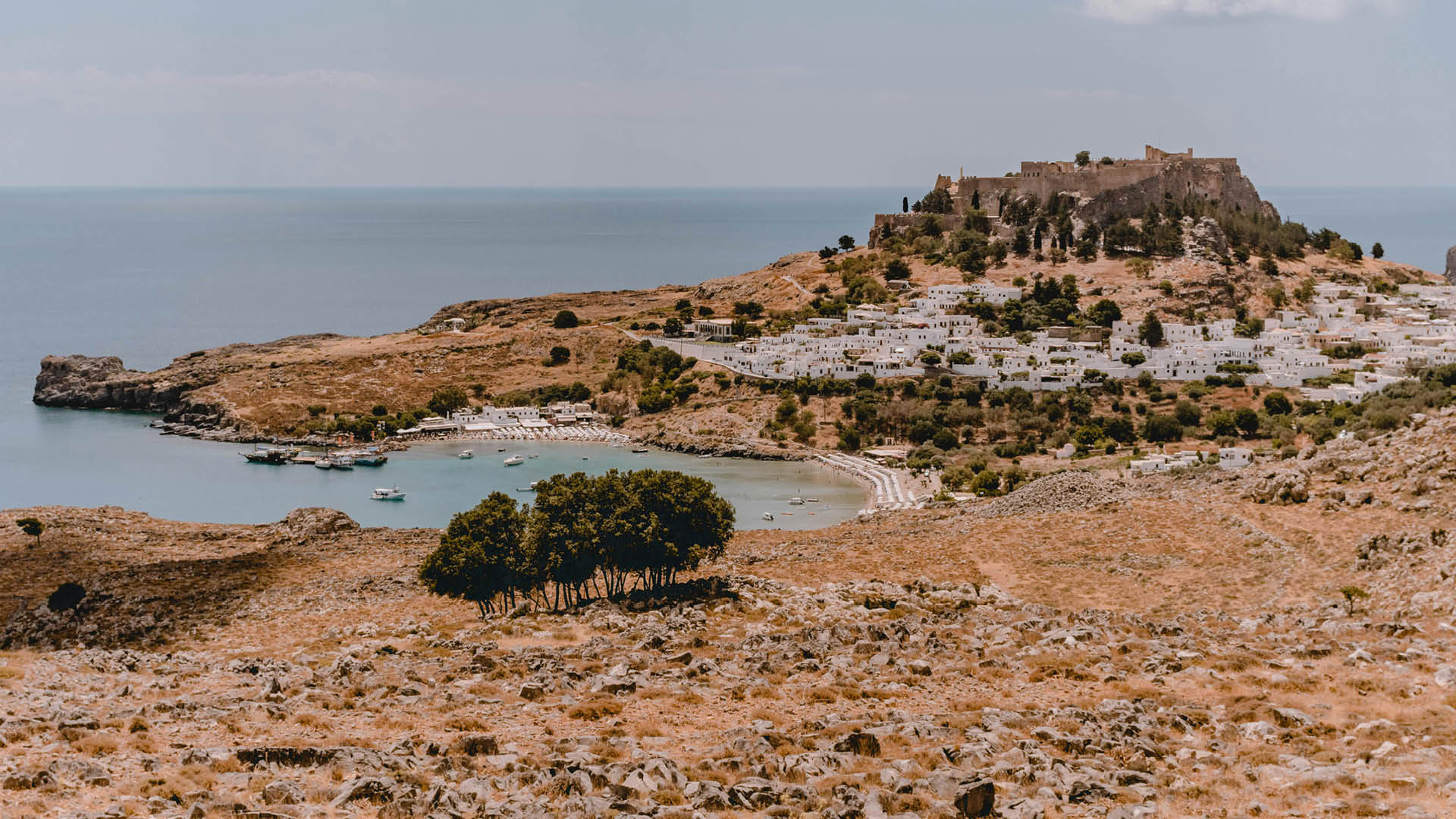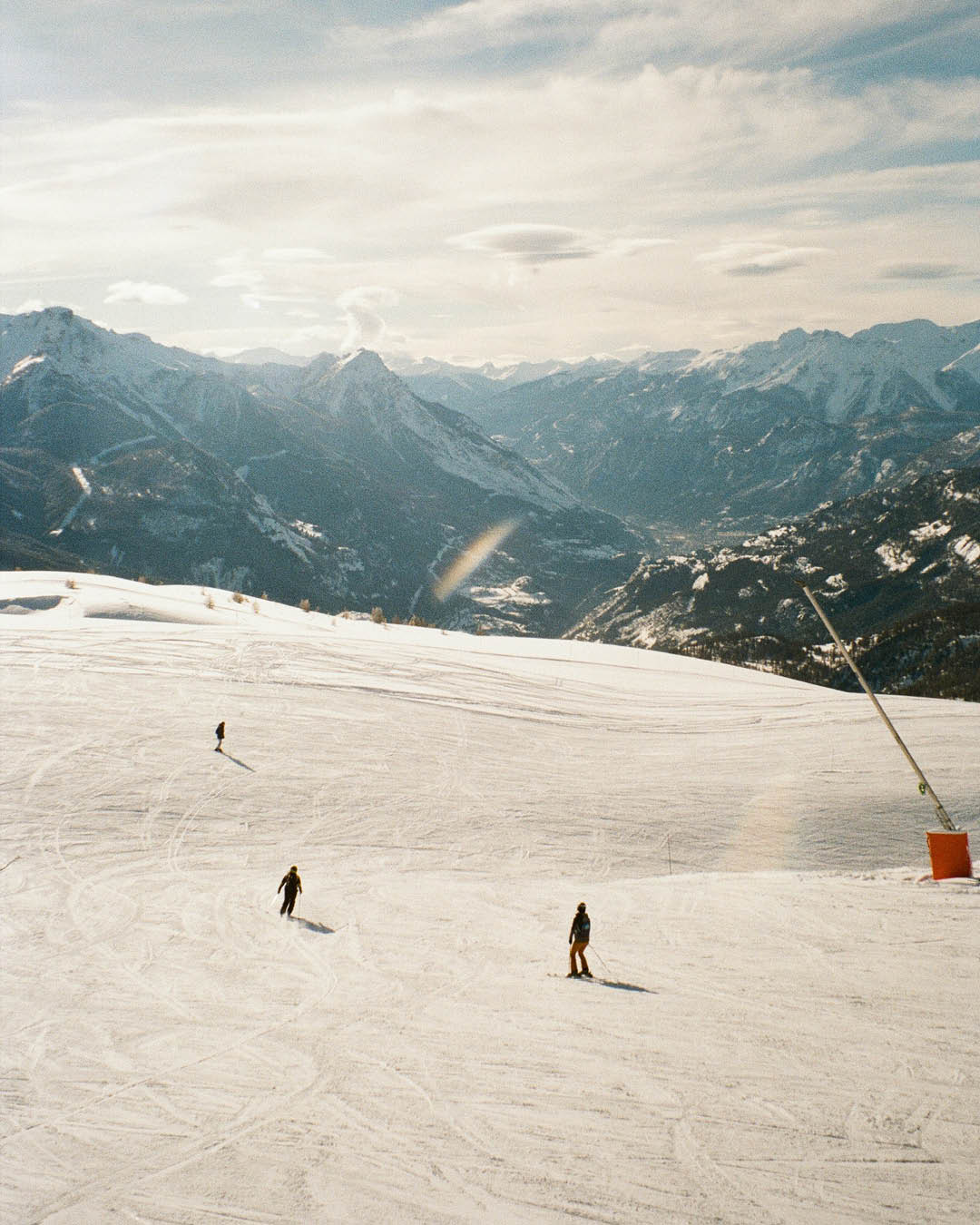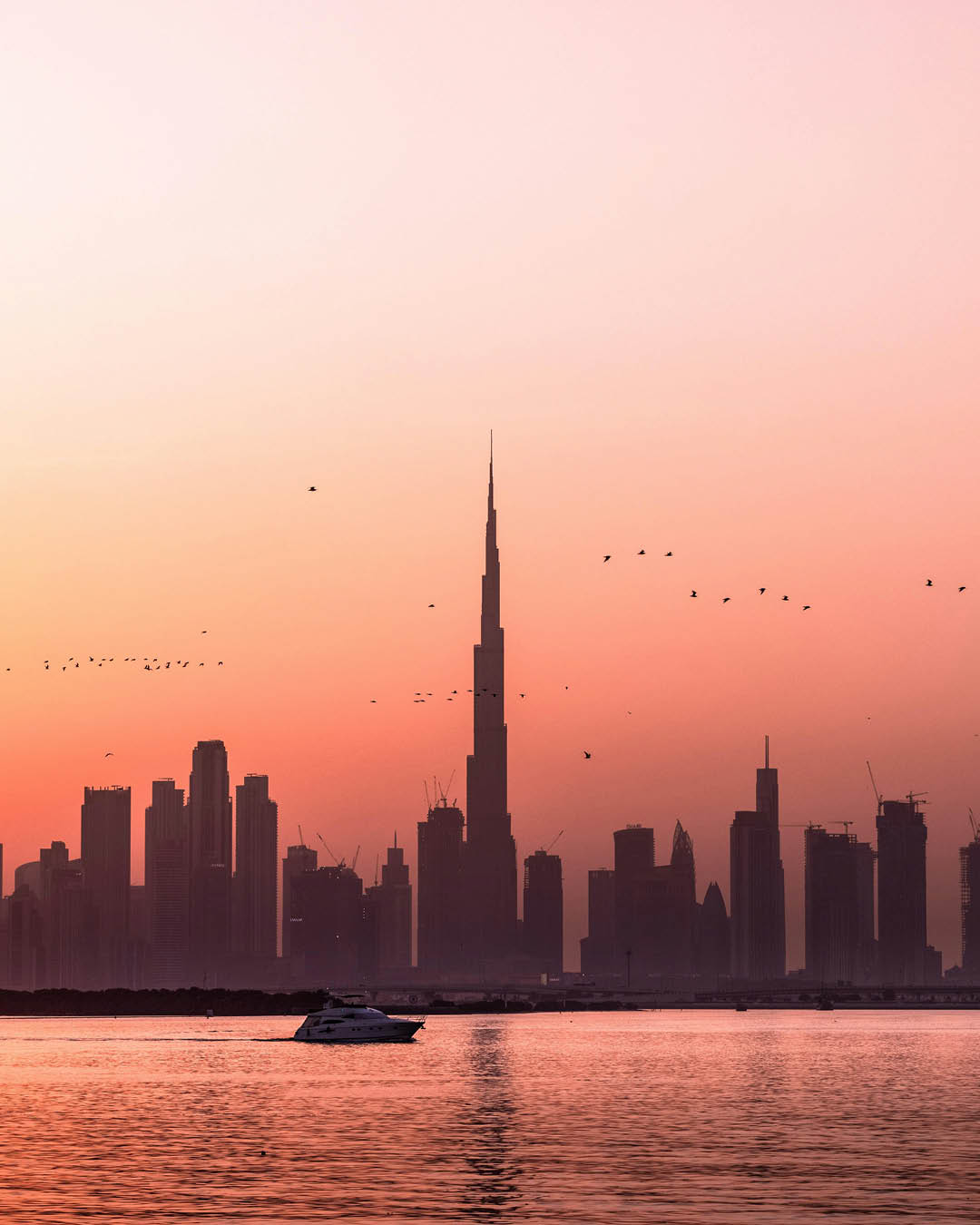
‘Coolcations’ are trending but climate change puts the travel industry in peril
Travellers are increasingly switching their choice of destination following a rise in extreme weather events and record summer temperatures. What effect is climate change having and which destinations are witnessing the greatest change?
Among the most surprising sights this year so far were the scores of supercars strewn across Dubai’s flooded streets; this ultra-modern megacity brought to a halt and its airport awash as the UAE endured more than a year’s worth of precipitation in just 24 hours.
Contrast this with similarly unforgettable scenes last summer, when Europe recorded its joint highest average temperature (alongside 2020) and wildfires swept through southern swathes of the continent – as well as Hawaii, Indonesia, Chile and Canada, which had its worst wildfire season on record. On the Greek island of Rhodes, 18,000 hectares (15 per cent of the island’s surface area) were engulfed in flames, destroying 50,000 olive trees, trapping thousands of animals and leading to the mass evacuation of nearly 20,000 tourists.

Predicting unpredictability
“The dog days of summer are not just barking, they are biting – climate breakdown has begun,” announced António Guterres, secretary-general of the United Nations, last summer, referencing what he dramatically described as a “season of simmering”. Although perhaps exacerbated or distorted last year by the El Niño weather system in 2023, trends in data nevertheless show that extreme weather events are becoming more frequent. According to the United Nations’ climate body, the IPCC, human activity is leading to more frequent and more intense heavy rainfall events, while climate change is also making the weather conditions needed for wildfires to spread more likely. By 2100, the UN Environment Programme (UNEP) estimates that the global number of the most extreme fires may rise by up to 50 per cent.

Many meteorologists are concerned about the rate of acceleration. “We’re currently in a climate transition zone. During the 1970s and 1980s, people started to realise that CO2 was going to be a factor in years to come if we didn’t control fossil fuel emissions,” says Jim Dale, of the British Weather Services, the UK’s longest standing independent meteorological organisation. “The number of ‘incidents’ at that time were next to zero. But in the past two decades the incidents that have occurred have become grander and more frequent. We can’t be isolationist about this – it’s crucial to join the dots.”
Climate change has very real implications in the travel sector, whether in the case of the Dubai floods, supposedly caused by a clash of air masses coming from the desert and Arabian sea and exacerbated by record temperatures; snow-free ski slopes during peak winter season, or 2023’s summer wildfires, fuelled by long, continuous dry and hot periods that created perfect conditions for combustion.


Beyond buzzwords
It’s already playing out this year with the rise of what’s, perhaps flippantly, been dubbed as “coolcations”. As indicated by Google Trends data, which has shown a 300 per cent increase in the search term “cooler holidays”, this apparent tendency for travellers to switch up their plans to avoid heat extremes shows how climate change has the potential to transform where and when we travel.
“Climate change is impacting travel decisions and it’s more prevalent now than it has been in previous years – particularly after extreme heat waves in southern Europe and wildfires in Greece, Canada and Maui last summer,” says Javier Arredondo, VP, Sustainability for Virtuoso, a global network of luxury travel agencies whose recent Virtuoso Luxe Report showed that 75 percent of advisors said travellers are choosing to travel to destinations where the weather is less extreme.

“Clients have postponed or cancelled trips to regions affected by wildfires, instead waiting to see if conditions improve, or even opting for destinations considered to be less vulnerable to extreme weather conditions,” says Arredondo, explaining how a destination’s perception among travellers can be affected for some time after an event due to concerns about the repeat factor, damage to infrastructure or overall disruption to a dream trip. “We’ve encountered clients opting to go to the southern hemisphere this summer in search of cooler weather in places such as Patagonia, the lakes in Chile or South Africa, after a terrible experience with heat in the Mediterranean last summer.”
Climate change is impacting travel decisions and it’s more prevalent now than it has been in previous years
While the Med remains a favourite for luxury travellers, Virtuoso’s bookings for Scandinavia this summer have increased dramatically: Sweden and Denmark seem to be drawing the most interest, with increases of 145 per cent and 75 per cent respectively, compared to 2023. While other factors – cheaper flights and weaker currencies – are also sure to have played a role, Arredondo expects that climate conditions will drive more tourists northbound. This tallies with projections from the European Commission, which estimate that a temperature rise of 3°C or 4°C on the continent will reduce the number of summer tourists by almost 10 per cent in southern coastal regions, and raise demand for northern coasts by five per cent.

Nick Van Gruisen, owner of luxury travel operator The Ultimate Travel Company says that certain Swedish clients are turning their focus towards summer tourism, despite having traditionally been thought of as a winter holiday destination “The Arctic Retreat in Swedish Lapland has started to see the Northern Lights as early as mid September,” he says, “which, when paired with warmer weather, means the lodge is now promoting fishing, kayaking and wild swimming in addition to its usual winter activity programme.”
Finland, Iceland, Norway and the Baltics have also reported upticks in summer bookings. In France, reports show increased interest in northern regions including Brittany, the Loire Valley and Normandy. Over the border in Spain, data from the Instituto Nacional de Estadística shows that, while the Balearics and Canaries remain popular, the cooler, wetter northern regions of Galicia, Cantabria and Asturias are those with the greatest increase in overseas visitors last year.

A global shift
Around the world, shifts in climate are manifesting in unique and distinct ways. Japan’s cherry blossom season has been occurring ten days earlier on average than in previous years, while a growing number of ski destinations are experiencing periods where resorts lack snow during traditionally busy winter months.
In Kenya, Moon Hough, owner of the Safari Series tented camps, has observed seasons becoming less rigid in their structure. “In the past, weather patterns were constant and easy to predict, so nearly all safari properties would close during the rainy season,” she says. “Now the rains can come months early or late or fail altogether, meaning you can be closed at times when it is not necessary to do so. We are seeing more guests choosing to visit on safari in typically less popular times to take advantage of low season and rainy season rates.”

With tourist seasons shifting, elongating and evolving – and the traditional high-season conditions tricky to predict – it’s perhaps little surprise that travellers are instead opting to travel during shoulder months. “We have seen several properties extend their seasonality to make way for more opportunities to enjoy those destinations outside of periods that see a surge of recurring heat waves,” says Nick Cunningham, Europe destination manager at experienced tour operator Scott Dunn. “Historically, most of our Santorini properties have not opened until the last week of April or early May. We have now seen several open in early April and extend their opening periods until the last day of October; other Greek islands are following suit.”
Rather than the traditional high and low seasonal cycle, Cunningham notes how the Mediterranean summer now has “double peaks” – one in May to June and another in Sep to Oct. “July and August now present an opportunity for those who may not mind the heat to receive lower rates; this used to be high season,” he says, noting how Italian properties in Sicily, Puglia, and Tuscany are now staying open through the New Year before opening again in early March, while some properties in the south of France are now staying open year round.
“We are now asking our partners to extend their seasonality to accommodate the requests for what used to be low-season or off-season,” says Cunningham. “Those destinations and hotels not adapting to this demand stand to lose out on market share to cooler destinations in Europe (Alpine and Scandinavia) or elsewhere globally.”
Those destinations not extending their seasonality stand to lose out on market share to cooler destinations in Europe
Mitigation and managing expectations
Adaptation, whether through pricing models, package deals and extended opening periods, is sure to become increasingly common in the face of unpredictable weather conditions. Equally important – especially in hotter destinations – is mitigation. Following last summer’s wildfires. Greece has spent 2.1 billion EUR on enhanced firefighting equipment, drone monitoring and fire detection systems, with the US government pledging 7 billion USD to manage what’s seen as an escalating wildfire crisis.
Elsewhere, adopting technology and adapting hotel design – whether in the form of passive greening, enhanced cooling, intelligent construction and the education of locals and travellers alike to the threats of extreme climate events – will all become increasingly crucial as global temperatures continue to rise. “There’s a race going on. There will be towns, cities and destinations that will cope very well and start doing the right things and others that will not,” says Dale. “People will vote with their feet and will choose not to go to destinations that are experiencing 40-45 plus degree heat, unless those locations incorporate heat alleviation infrastructure and technology.”












